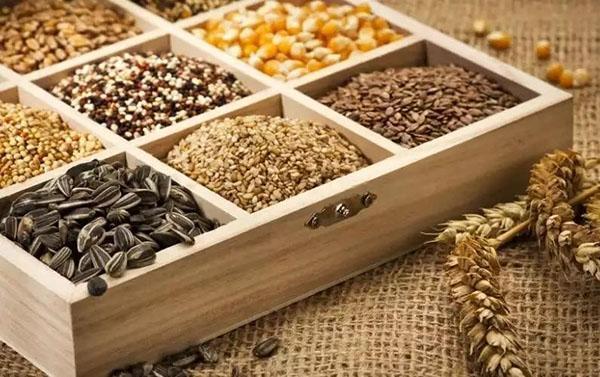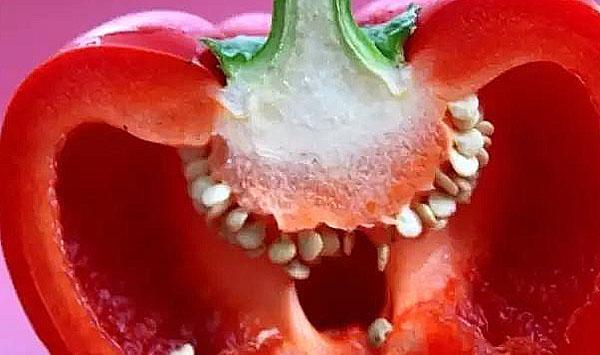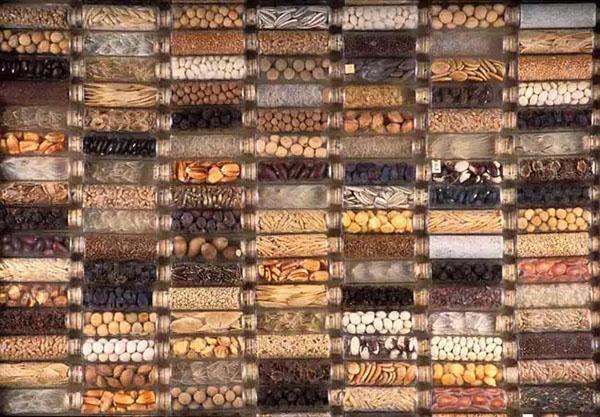Rules for collecting and storing seeds from your personal plot
 Collecting and storing seeds from your garden is an easy and economical way to propagate the plants you want. Regardless of your gardening experience - many years or just one year - you can easily harvest and store the seeds from your crop to use for planting next year.
Collecting and storing seeds from your garden is an easy and economical way to propagate the plants you want. Regardless of your gardening experience - many years or just one year - you can easily harvest and store the seeds from your crop to use for planting next year.
For most plant species, collecting and storing seeds is a fairly easy process that requires only a little time, organization and planning.
It is important to know about it

Seeds will give the best results:
- non-hybrid and naturally pollinated plants;
- annuals;
- non-cross-pollinated plants;
- fully ripe seeds from healthy plants.
 Seeds from hybrid plants when planted next year can give unpredictable results. But the same kind of non-hybrid plants can be propagated by seeds for a long time, provided that you do not place them too close to other varieties - cross-pollination may occur.
Seeds from hybrid plants when planted next year can give unpredictable results. But the same kind of non-hybrid plants can be propagated by seeds for a long time, provided that you do not place them too close to other varieties - cross-pollination may occur.
It is usually fairly easy to determine whether your plants are hybrid or non-hybrid if you have bought seeds or seedlings for your garden from a nursery or ordered them online. In this case, the type of plant will be indicated on the marking.
However, it does not hurt to be careful if you have planted several different varieties of the same species on your plot, as there is a high probability of cross-pollination. This is not a problem for self-pollinating plants like beans or tomatoes, and it is not a problem if you are willing to experiment a little. However, if your goal is to preserve the genetic makeup of non-hybrid plants, such as squash or cucumber, you need to be sure that no cross-pollination occurs between the plants.
 Annuals (e.g. beans, cucumbers, squash, peppers, tomatoes) are much easier to preserve with seeds than biennial plants (e.g. cabbage, beets, carrots, cauliflower, onions, turnips), which will require harvesting the entire plant, including the root , storage during the winter and then replanting in the spring.
Annuals (e.g. beans, cucumbers, squash, peppers, tomatoes) are much easier to preserve with seeds than biennial plants (e.g. cabbage, beets, carrots, cauliflower, onions, turnips), which will require harvesting the entire plant, including the root , storage during the winter and then replanting in the spring.
And of course, if you want to achieve good results, harvest and store only fully ripe seeds and only from healthy plants. To collect seeds, many types of vegetables are harvested later than usual.
How to collect and store seeds correctly
Now that you know how to determine which seeds you can store, use the helpful tips below. They will help to properly collect seeds and maintain their germination when planting for the next season.
There must be enough seeds
When collecting seeds, consider the amount of plants you plan to plant next year, plus extra stock in case some of the seeds do not germinate or are eaten by birds or small animals.
Seeds must be clean and dry
 When harvesting seeds, be sure to clean them from the remnants of pulp or fibrous part, for example, like zucchini or pumpkin. Place clean seeds on a drying tray. This process usually takes several weeks, depending on the size and type of seed.
When harvesting seeds, be sure to clean them from the remnants of pulp or fibrous part, for example, like zucchini or pumpkin. Place clean seeds on a drying tray. This process usually takes several weeks, depending on the size and type of seed.
The seeds must be completely dry, otherwise they may rot.
For each type of plant, there are the most suitable methods for cleaning and drying seeds. For example, picking tomato and cucumber seeds will take a little more time and effort - it will take a fermentation process to remove the gel that envelops the seeds. But for other plants, for example, beans, it is quite simple to prepare seeds - they do not need to be cleaned or washed, it is enough just to remove the shell from them.
Store seeds in packaging
 Alternatively, you can use special bags that you left after planting the purchased seeds. This is very convenient, since you can immediately see the seeds of which plants are inside, in addition, they, as a rule, have special instructions for growing this type of plants. If these bags have not survived, small paper envelopes are fine.
Alternatively, you can use special bags that you left after planting the purchased seeds. This is very convenient, since you can immediately see the seeds of which plants are inside, in addition, they, as a rule, have special instructions for growing this type of plants. If these bags have not survived, small paper envelopes are fine.
Tag harvested seeds
 It is very important. Even if you are sure that you have a good memory of what certain seeds look like, there is a chance that you may forget about it next year. On the seed bag, write down the type of plant, the variety name, the date the seeds were packed, and any growing information you think will be useful for planting next year.
It is very important. Even if you are sure that you have a good memory of what certain seeds look like, there is a chance that you may forget about it next year. On the seed bag, write down the type of plant, the variety name, the date the seeds were packed, and any growing information you think will be useful for planting next year.
Store seeds in a cool, dry place
Once the seeds are harvested, dried, wrapped and signed, they can be stored in a cool and dry place. Remember the main thing - you need to avoid places with high humidity or sudden changes in temperature!
That's all the simple rules! Now that you have correctly collected and saved your seeds, you can use them to plant in your garden plot.